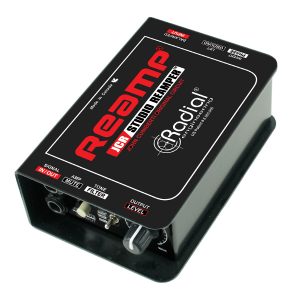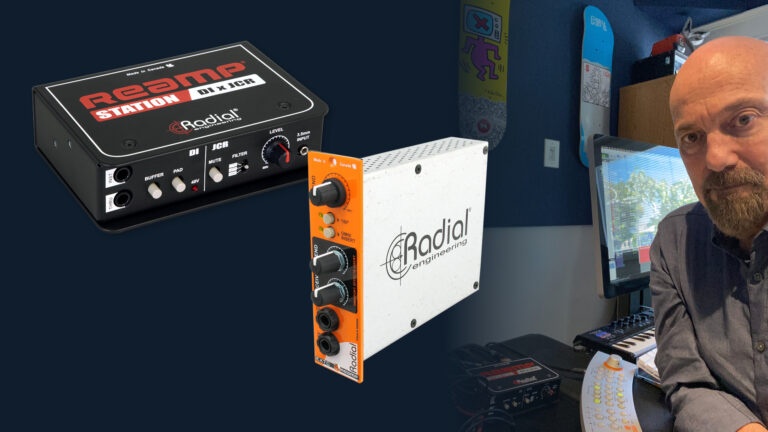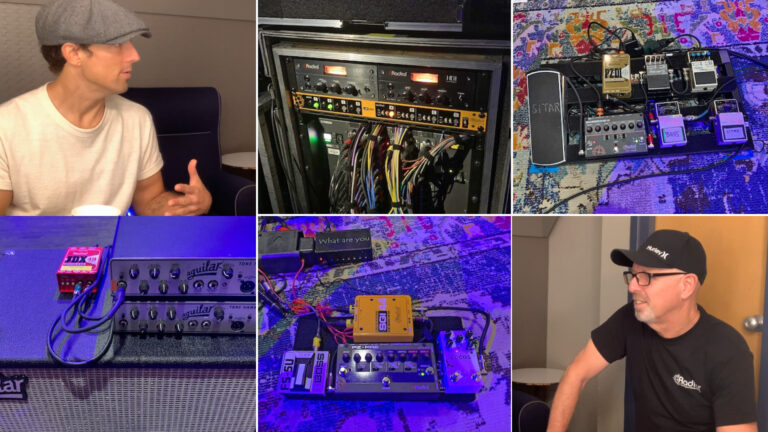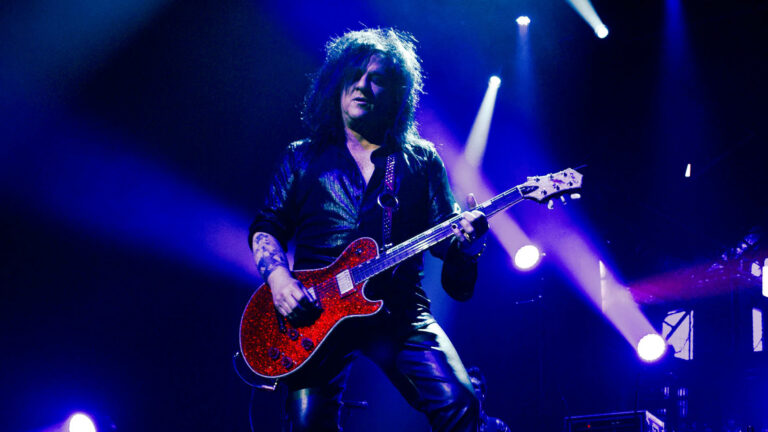In this series, we talk to some top names in the world of production, to learn about some of the different ways they use Reamping as part of their everyday process in the studio. Our interviewees share their insights into some of the original and creative ways they Reamp® that may not have occurred to you before…
In this interview, we spoke to session drummer, producer and engineer, Shannon Forrest.
Radial: Tell me a little bit about how you got into re-amping and why you started using re-amping in your production work?
Shannon: Well, when it comes to guitar, my approach to recording a guitar is to get the sound at the amp. I don’t usually have an EQ inline or a limiter or anything when I’m recording guitar. And consequentially, a lot of guitar players really like the way their guitar sounds when we work together. I’m real particular about making sure the artist’s voice is captured. The guitar player’s voice is such a unique thing to each player.
And then on the mix side of things, if I’m producing and working on something, reamping gives me the flexibility to go back and adjust. Let’s say you can’t EQ, on the console side of things, a guitar tone into shape. You can do some things to address it, but ultimately it has to happen at the amp coming out of the hands and getting what you want.
So reamping always gives me not necessarily a safety net because I’m a fairly committed guy. I don’t really use reamping in the most traditional way, but it does afford me the opportunity to go back in and tailor the guitar sounds against a mix, not just statically as I’m just capturing them. But once it’s mix time, if I decide I need to saturate something a little more or just layer something in, I can use it for that. It’s a great tool that way.
FIGURE 1
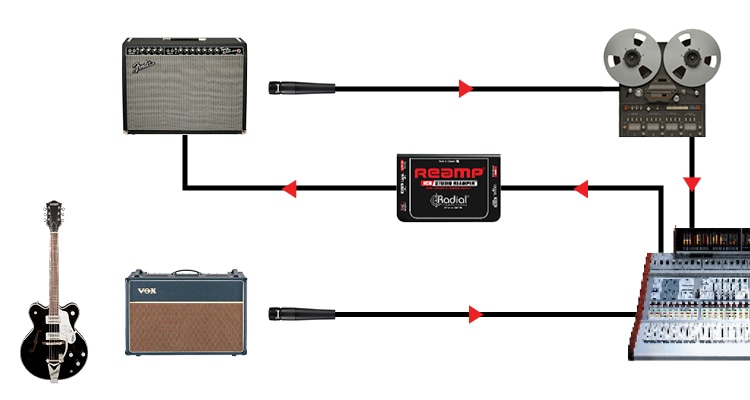
If I’m working with artists that sometimes aren’t necessarily session player type performers but are very uniquely artistic, expressive players, I like to work with tape a lot. And so what I’m doing lately with reamping is, if it happens to be a situation where maybe I’m comping a guitar part together, I will take the end result from Pro Tools and pipe it back out to an amp and capture it analog to go along with my drums and other things I like to have captured that way. And I also like to mix down from analog (see fig. 1)..
It gives me the capacity to work with an editor to comp guitar parts on artists that maybe don’t have the technical capacity that is ideal. When you start working with people on that level intonation can be hit and miss and different things like that. It gives me the opportunity to just comp things together, get the real signature of that particular player, and then capture it in an analog way that I like to work with. So that’s the bigger way that I use reamping lately.

Radial: So you always know you can go back in later and have some flexibility to adjust that and work with that?
Shannon: Well, it’s not exactly that because I’m highly, highly committed to making a decision and sticking with it. You know what I mean? So I do take the time during the recording session to get those things right. But it’s more so when I’m working with someone who doesn’t have an arsenal of a bunch of amps. Or If I’m working with an artist that’s an artistic player and they’re not as refined as, say, a Michael Landau. Although I do use reamping with Michael also.
And I can explain a bit of how Michael showed me how to use some of it and what he likes to do. With reamping, I can be immersed in the creative and not overly analytical about getting the end all, be all. It gives me the flexibility to continue to use that color palette as I finish the record.
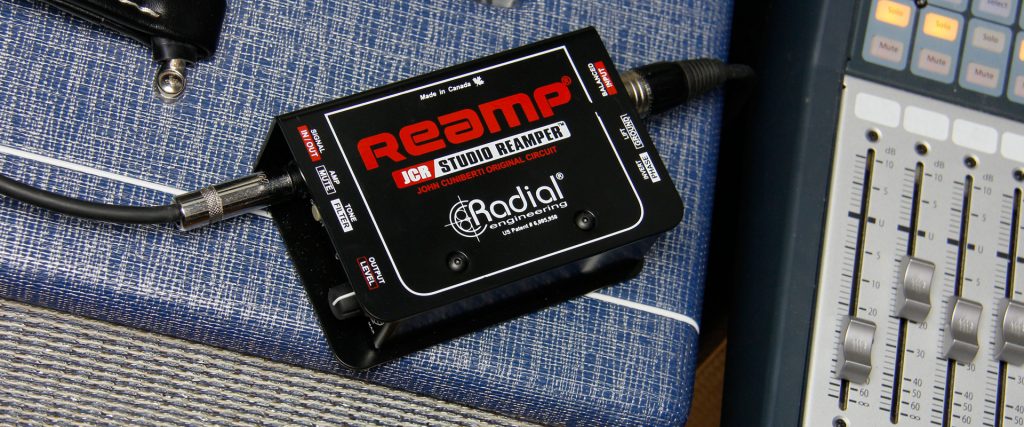
Radial: And as far as the Radial units that you use, is there a particular one that you use a lot or one that you like?
Shannon: The one that I literally have right in front of me is the JCR Studio Reamper. And what’s great about it is you can get any signal to any destination. All the options it has on it are really great. The level control, the filtering, and all of that stuff. There are so many unique things you can do with the JCR.
FIGURE 2
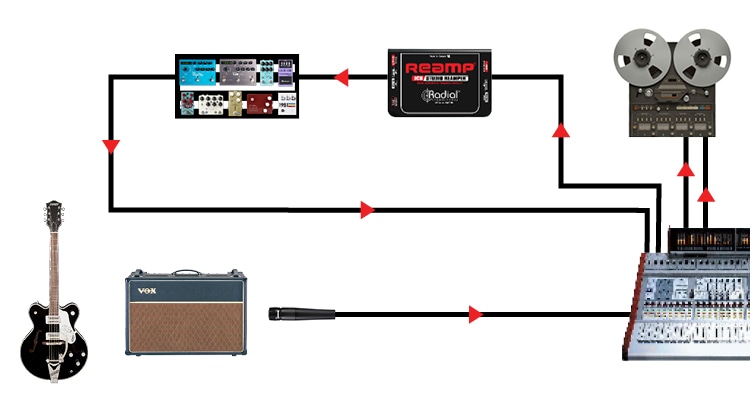
I’ve recorded the amp signal straight into tape, if you will. And I can take that line back from my console and bust it back out to a pedalboard. And now the output of the pedalboard is being recorded evenly to the amp signal. So you’re getting the amp sound through the pedals, not vice versa if that makes sense (see fig. 2).
That’s an interesting thing to be able to do. I mean, there are definitely significant values to my ear of doing it that way. Just having the unprocessed guitar going straight to the amp, then taking that signal back out to a pedalboard, it just maintains the integrity of that initial tone.
I’m a drummer, I don’t play guitar, but I can certainly sit here and listen to guys’ equipment. And even when I’m in here, I always prefer pulling the pedalboard out of the chain and getting the sound out of the amp, but then you want all the effects. So that’s a really cool way to use it.
Radial: A question about the process. You hear a lot now about plugins and sims and things like that. Have you experimented with any sims? And do you find that the actual organic process of re-amping through an amp is different enough to using a plugin or a simulator?
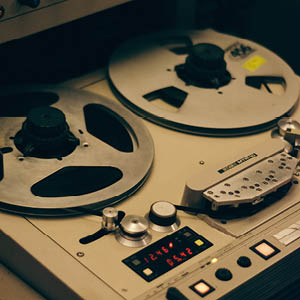
Shannon: Well, I’m highly opinionated when it comes to these things. The only thing that matters is the spirit you get coming through a speaker. All the tone and audio quality and reverence to all that, if you don’t have something committed and meaningful coming out of your hands, it really doesn’t matter. But you want to get all of it working together.
For me, it is not subtle at all. I mean, I use tape machines, and I have a controlled environment here where I can very quickly switch in and out of digital domains. And I use almost zero plugins. I’m not a totalitarian about anything so if something gets me along the way I’ll use it. But everything in here is outboard gear. I run through a console.
And I hear records that are interesting sounding that all the guitar was done through a Fractal, you know what I mean? But no, I mean, quite simply, even the Fractal sounds like a two-dimensional representation of a three-dimensional entity, you know what I mean? To my ear it hasn’t gotten any closer with the sims. They get certain things closer as far as saturation. Spectral information inside of some of that modeling has gotten a little more detailed, but there’s still no front to back in it.
Radial: So reamping might be more work than adding a plugin, but it makes a big difference in the ultimate sound of the song, does that sound right?
Shannon: Yeah, to me, it really comes down to what you’re trying to do. To oversimplify this discussion, you’re trying to communicate. And the more of that expression that you get, the better. And again, people subconsciously or consciously, they play into the motion that’s inside an amp. The way it compresses, the way the speaker moves air, the way everything captures it.
And the more evolved that musician is, the more they’re able to control the nuance of that, and it becomes an extension of what the listener experience is. Even if it’s on some subliminal way that they process that, everybody feels that stuff, they don’t need to know what it is to feel it. And when you start by throwing that character and quality completely out, it’s going to be different. I’m not saying people don’t do great things that way, but it’s just, you’re not going to have that available.
Radial: Do you feel that there are particular types of amps that you tend to gravitate more towards to versus transistor or brand, or Fender versus Marshall or whatever. Or is the amp selection different for each project?
Shannon: I’m a drummer basically by voice, but I love tone. I mean, the first time I got to work with Michael Landau I went and stood out in front of his speakers at 130dB just because I wanted to go, “Why does it sound so different on records?” And it’s like, well, it sounds different at the amp, you know what I mean, that’s why. And what you hear is there.
It’s like, those things, again being a drummer, I got a million snare drums, whatever so there are variations. But for me, it’s something around an AC-30 kind of thing, that real open, clear immediate thing. Then you have the Fender thing that compresses the way that it does and you have the Marshall thing. And then you get into the modern things with the Bogner, the Mesa stuff, or whatever.
And to me, that’s about three or four shades right there. And then you can do things with pedals. I tend to like things that are a bit more open-sounding. I’m not so much a traditional Fender sound guy. I like things that have a more immediate top end and more spectral sort of harmonic layers to the top end.




